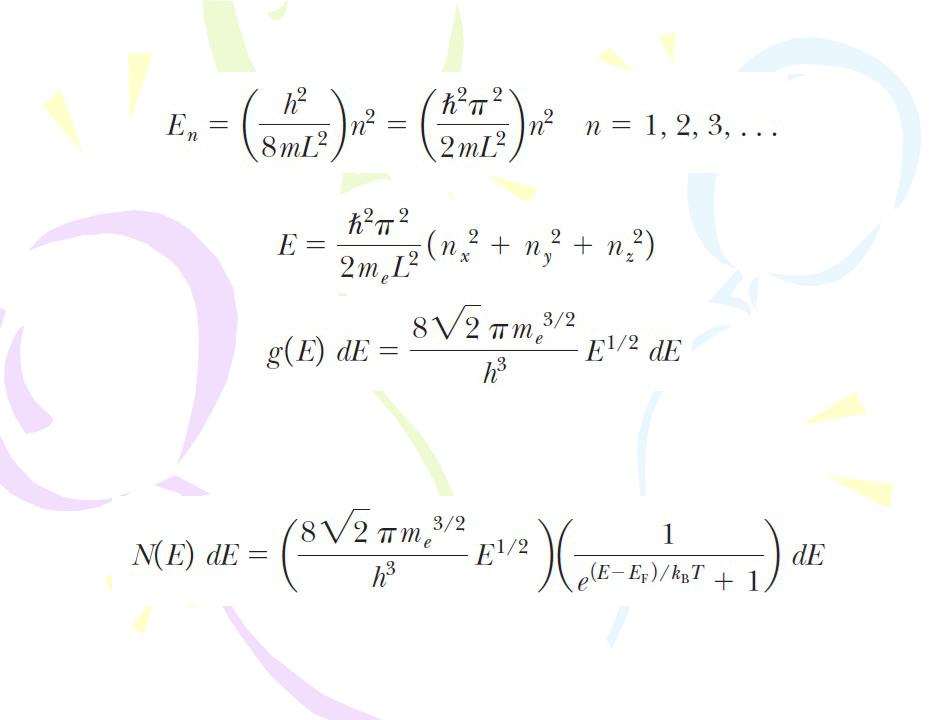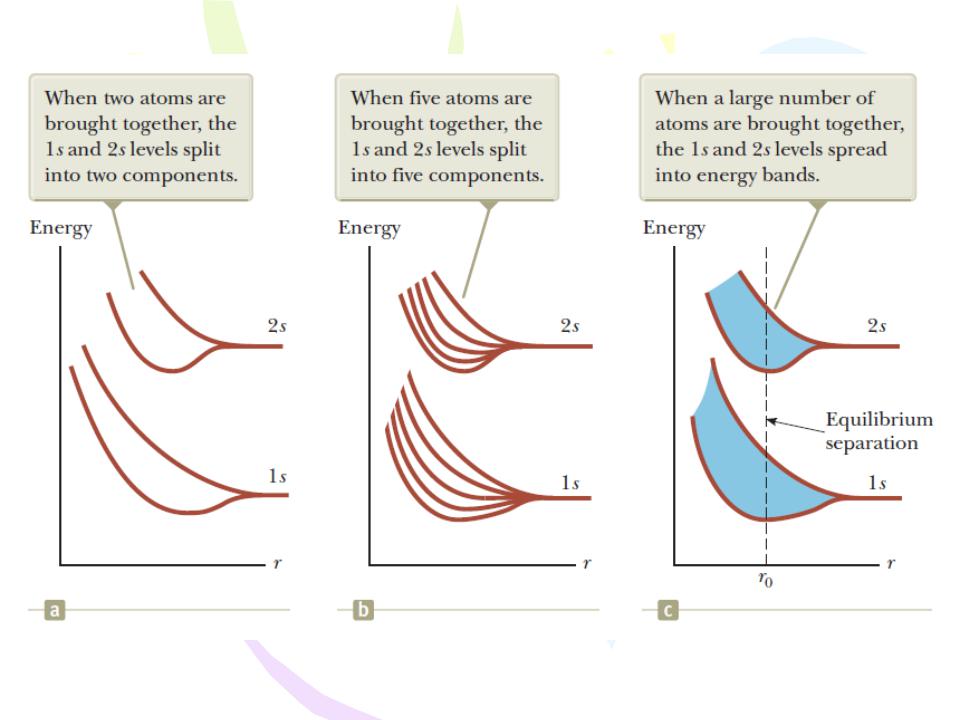
- •Course of lectures «Contemporary Physics: Part2»
- •Molecular Bonds
- •Molecular Bonds
- •Molecular Bonds
- •Molecular Bonds
- •Molecular Bonds
- •Molecular Bonds
- •Molecular Bonds
- •Energy States and Spectra of Molecules
- •Energy States and Spectra of Molecules
- •Energy States and Spectra of Molecules
- •Energy States and Spectra of Molecules
- •Energy States and Spectra of Molecules
- •Energy States and Spectra of Molecules
- •Energy States and Spectra of Molecules
- •Energy States and Spectra of Molecules
- •Bonding in Solids
- •Bonding in Solids
- •Bonding in Solids
- •Bonding in Solids
- •Bonding in Solids
- •Free-Electron Theory of Metals
- •Free-Electron Theory of Metals
- •Free-Electron Theory of Metals
- •Free-Electron Theory of Metals
- •Free-Electron Theory of Metals
- •Free-Electron Theory of Metals
- •Band Theory of Solids
- •Band Theory of Solids
- •Band Theory of Solids
- •Electrical Conduction in Metals,
- •Electrical Conduction in Metals,
- •Electrical Conduction in Metals,
- •Electrical Conduction in Metals,
- •Electrical Conduction in Metals,
- •Electrical Conduction in Metals,
- •Superconductivity
- •Superconductivity

Bonding in Solids
Metallic Solids
Metallic bonds are generally weaker than ionic or covalent bonds. The outer electrons in the atoms of a metal are relatively free to move throughout the material, and the number of such mobile electrons in a metal is large. The metallic structure can be viewed as a “sea” or a “gas” of nearly free electrons surrounding a lattice of positive ions

Free-Electron Theory of Metals
Statistical physics can be applied to a collection of particles in an effort to relate microscopic properties to macroscopic properties. In the case of electrons, it is necessary to use quantum statistics, with the requirement that each state of the system can be occupied by only two electrons (one with spin up and the other with spin down) as a consequence of the exclusion principle. 
The probability that a particular state having energy E is occupied by one of the electrons in a solid is 
f(E) is called the Fermi–Dirac distribution function and EF is called the Fermi energy.

Free-Electron Theory of Metals

Free-Electron Theory of Metals
The function g(E) is called the density-of-states function.

Free-Electron Theory of Metals

Free-Electron Theory of Metals

Free-Electron Theory of Metals

 Band Theory of Solids
Band Theory of Solids

 Band Theory of Solids
Band Theory of Solids
Energies of the 1s and 2s levels in sodium as a function of the separation distance r between atoms.

 Band Theory of Solids
Band Theory of Solids
Energy bands of a sodium crystal. Blue represents energy bands occupied by the sodium electrons when the atom is in its ground state. Gold represents energy bands that are empty.
bands occupied by the sodium electrons when the atom is in its ground state. Gold represents energy bands that are empty. 
Band theory allows us to build simple models to understand the behavior of conductors, insulators, and semiconductors as well as that of semiconductor devices, as we shall discuss in the following sections.
